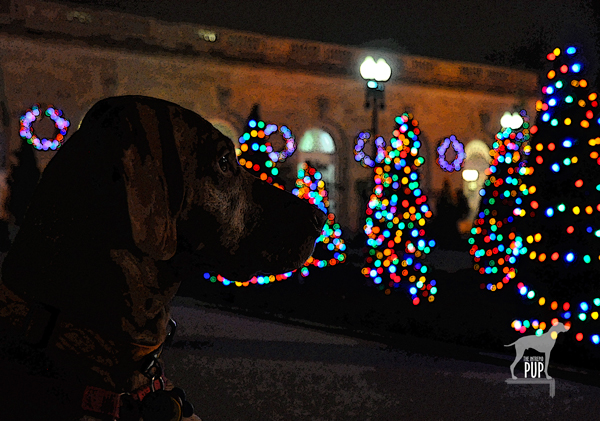
“Season’s Greenings” from the U.S. Botanic Garden! The colorful holiday lights outside merely hint at the wonders that lie within.
Throughout this series, Tavish the Intrepid Pup has been providing an insider’s guide to the national “howl-iday” scene. In his quest to find the most iconic—and dog-friendly—holiday spots the capital region has to offer, Tavish’s “pick of the day” is the annual Season’s Greenings display at the United States Botanic Garden. The institution falls under the auspices of the Architect of the Capitol. Dating to 1850, it has been in its present location on the wedge of land between Maryland Avenue and First Street, S.W., since 1933.
Okay, let’s just start by saying this place is beautiful year-round and is especially so during the holidays. In a city chock-a-block full of monumental and famous structures, it’d be easy to lose this one in the mix. But to do so would be a big mistake. The Botanic Garden takes the lead on horticultural education and issues of sustainable landscape design. With elaborate outdoor terraces and indoor habitats ranging from desert succulents to exotic orchids, there’s something for everyone. Not too be missed is the unique perspective from atop the canopy walk in the tropical rainforest that grows within conservatory’s 93-foot dome. And be sure to check out the magnificent Bartholdi Fountain set upon two acres of rose gardens just across Independence Avenue.
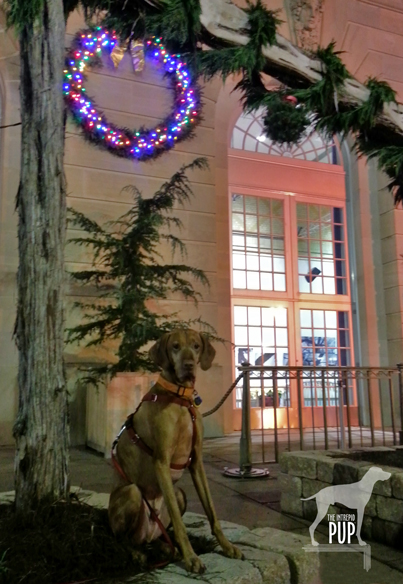
Will sit for kisses: Tavish has strategically planted himself beneath the mistletoe on the northeast terrace.
 Dogging the Details
Dogging the Details
38°53′17.90″N, 77°0′45.46″W
United States Botanic Garden’s “Season’s Greenings”, Washington, DC
Season’s Greenings is on display from late November through early January; check website for exact dates. Admission is free.
Pups aren’t allowed inside the Botanic Garden’s buildings, but fortunately you can lap up pretty good views of Season’s Greenings by peering through the conservatory’s picture windows after dark. One glimpse of the Enchanted Forest in the east gallery is enough to make you want to return on your own to explore inside.
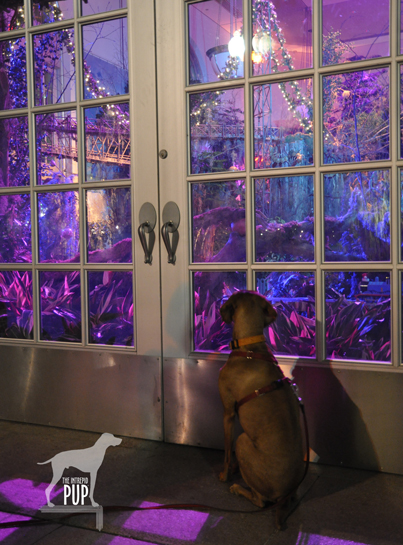
Tavish gazes longingly into the “Enchanted Forest,” just one part of the Season’s Greenings display. Model trains, decorated trees, and fairytale lighting make this a feast for the senses.
Planning for Season’s Greenings takes nearly a year, with the Enchanted Forest alone requiring approximately three weeks to install. It shows in the details. A carpet of poinsettias in 17 varieties. A towering 24-foot tree—one of the largest indoor decorated trees in the region. Eight hundred feet of track for the model railway. A line-up of live music on select evenings. And a mind-boggling assortment of DC landmarks created in miniature and entirely from natural plant materials!
Parking out in front of the Botanic Garden or at meters off Independence Avenue shouldn’t prove too difficult after hours. What’s more, it’s a “two-fer”: soak in the splendor of the lighted gardens and then make the three-minute stroll across the street to take in the Christmas tree on the west lawn of the U. S. Capitol (read the Intrepid Pup’s earlier account here).
A trip to the grounds of the Botanic Gardens earns a “1″ on the Intrepid Pup’s wag-a-meter as a free and pretty spectacular photo opp for you and your intrepid pup!

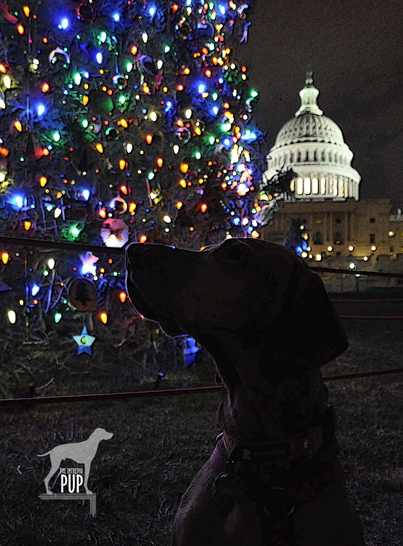

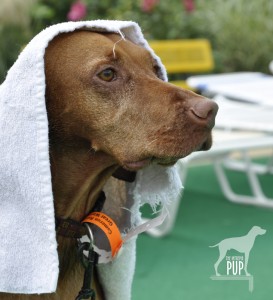

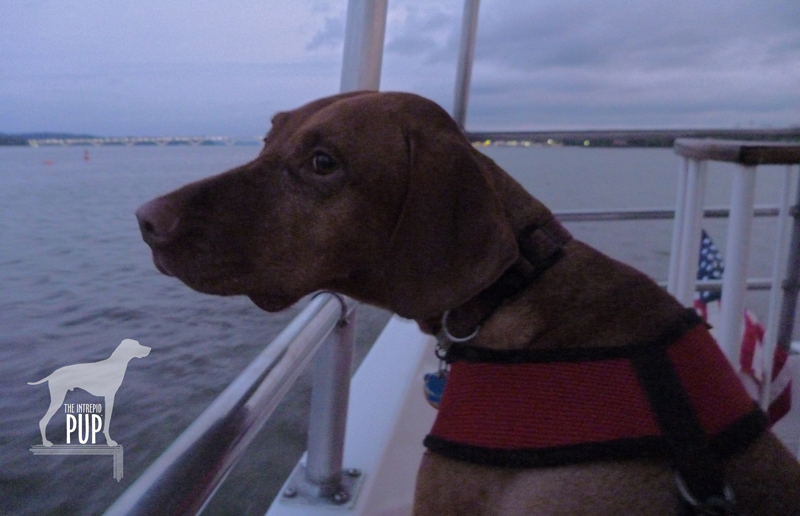
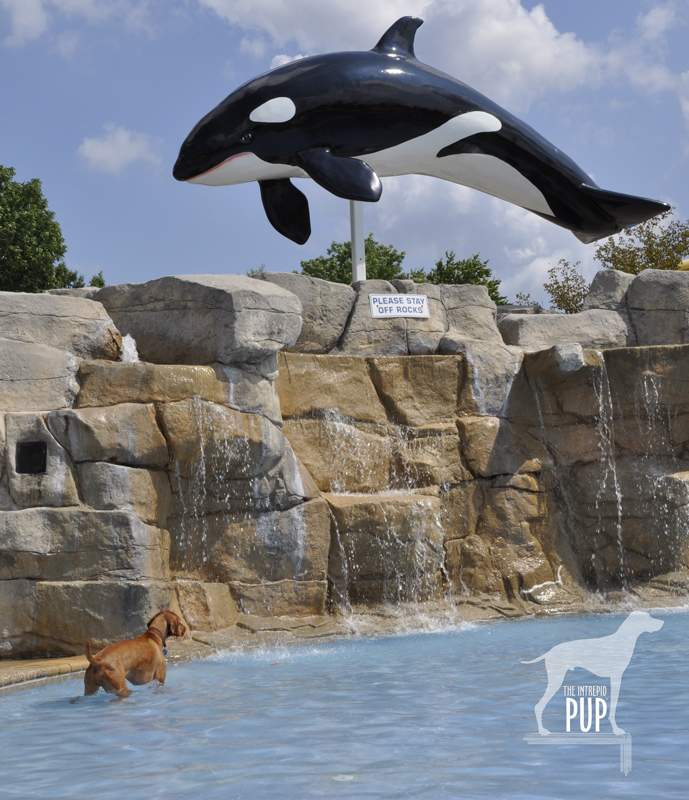
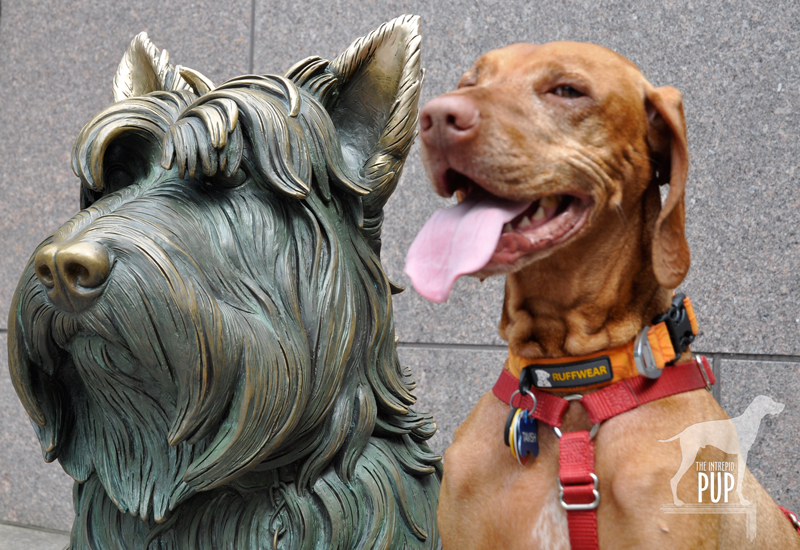
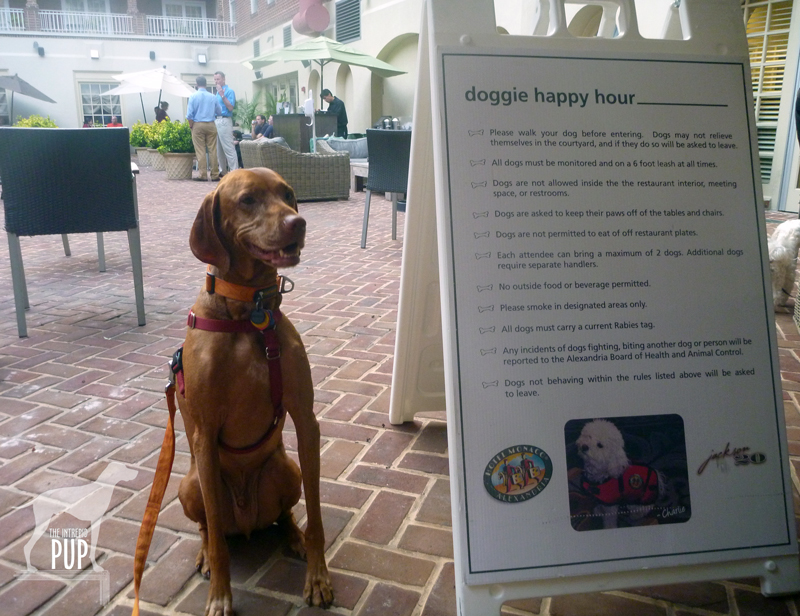
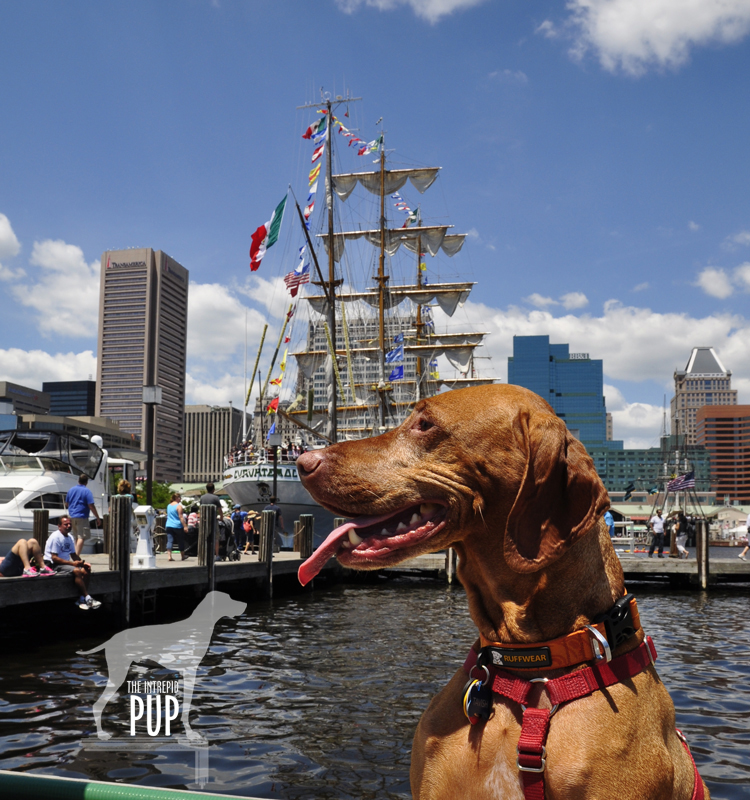
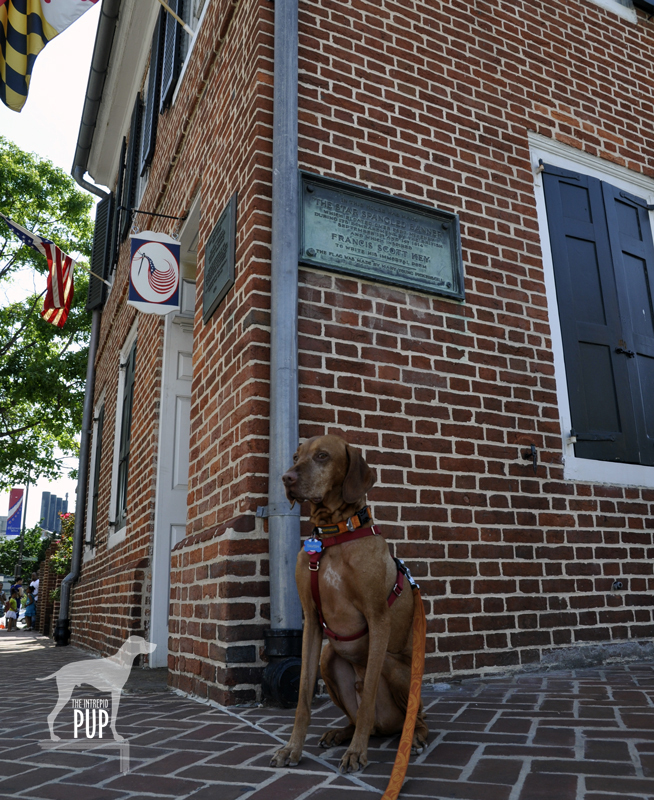


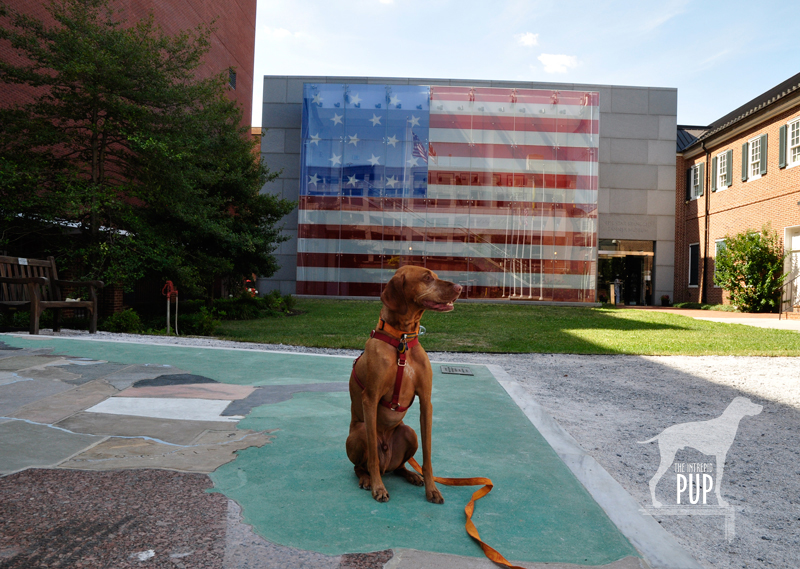
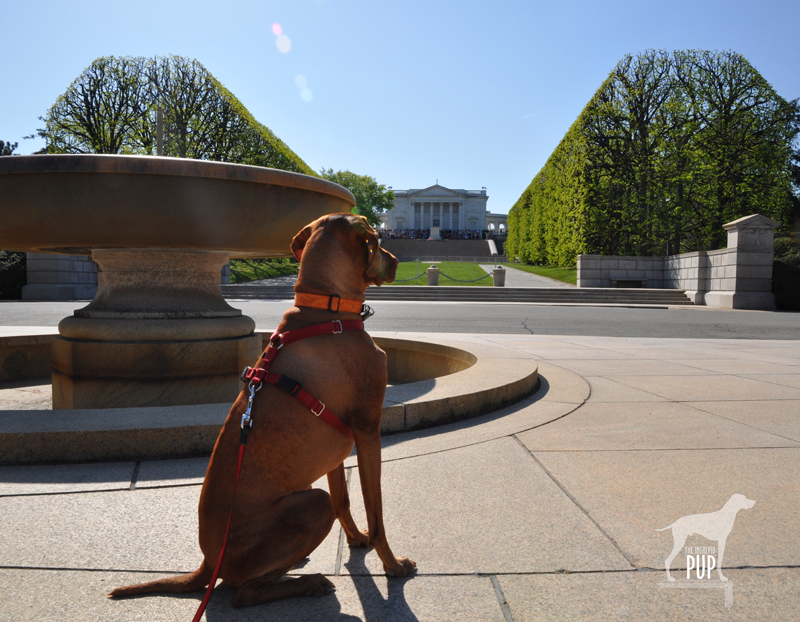
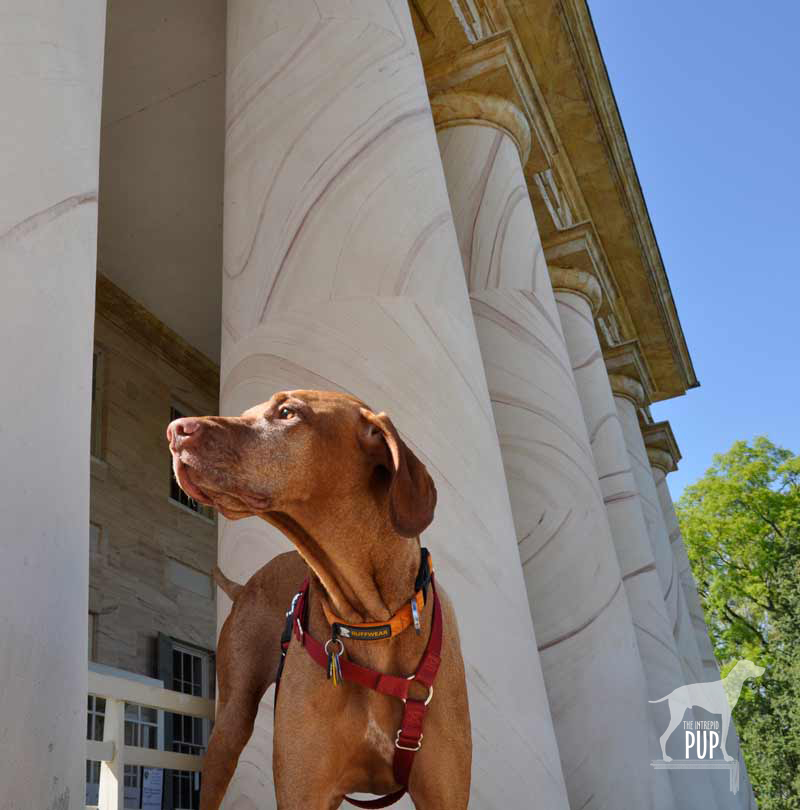
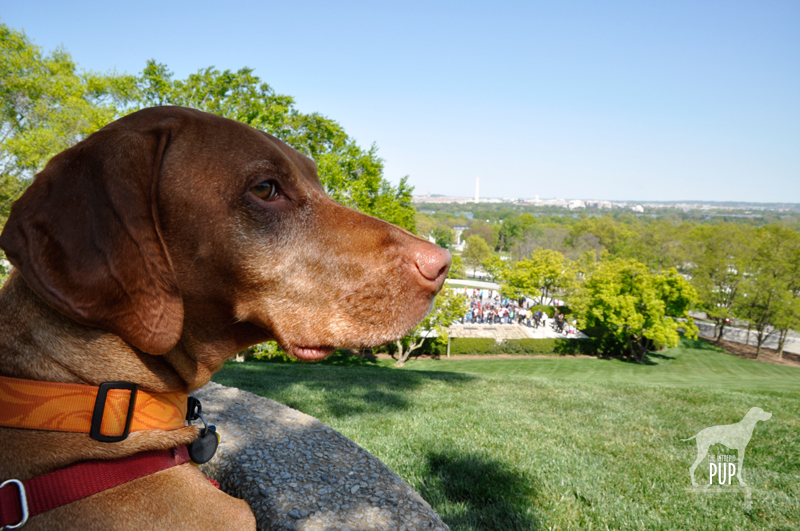
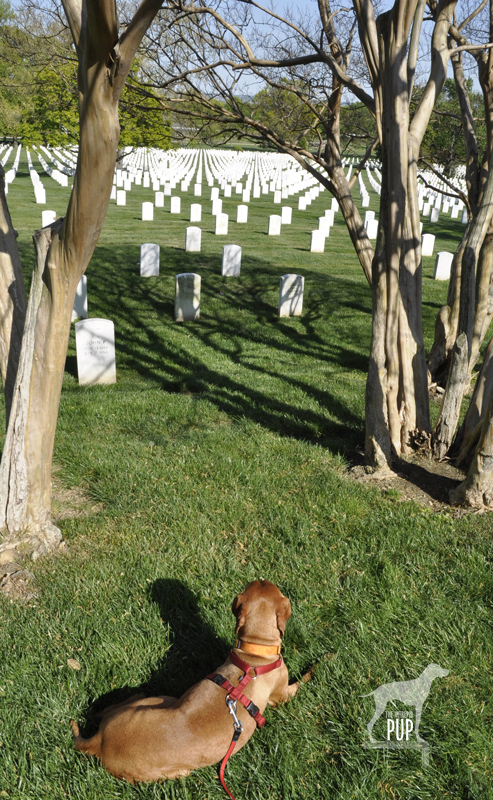 For as many times as we’ve visited Arlington National Cemetery over the years, it wasn’t until a friend and fellow dog owner recently mentioned it, that we were aware that leashed dogs are allowed on the grounds. Unless they’re service animals, they aren’t permitted in the visitor center buildings or inside Arlington House.
For as many times as we’ve visited Arlington National Cemetery over the years, it wasn’t until a friend and fellow dog owner recently mentioned it, that we were aware that leashed dogs are allowed on the grounds. Unless they’re service animals, they aren’t permitted in the visitor center buildings or inside Arlington House. Yonder’s
Yonder’s 









 Just in time for Presidents’ Day is this week’s
Just in time for Presidents’ Day is this week’s  to U.S. president Gerald Ford from Ford’s daughter and the White House photographer.
to U.S. president Gerald Ford from Ford’s daughter and the White House photographer.
